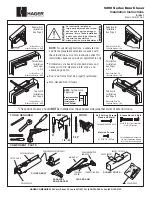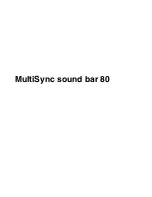
KRE-500DX1
Sound power levels Lw at center band frequencies
Total Lw
Hz
63
125
250
500
1000
2000
4000
8000
Supply duct
dB(A)
32.8
37.9
54.9
55.5
54.2
52.2
44.0
33.9
60.5
Exhaust duct
dB(A)
32.8
46.9
54.2
55.6
55.0
52.2
44.0
33.9
60.7
Outside the casing
dB(A)
27.8
33.1
42.8
41.3
40.0
37.4
12.7
9.0
47.0
1.6 Sound power levels
Noise at nominal working point
KRE-1000DX1
Sound power levels Lw at center band frequencies
Total Lw
Hz
63
125
250
500
1000
2000
4000
8000
Supply duct
dB(A)
46.4
52.9
60.1
59.3
59.0
59.0
52.5
47.9
66.0
Exhaust duct
dB(A)
45.8
52.5
57.0
58.1
56.6
57.2
52.0
47.9
64.1
Outside the casing
dB(A)
41.1
41.4
44.8
44.3
43.0
43.2
20.3
17.9
51.0
Noise at nominal working point
SECTION 2 - TRANSPORT
2.1 Packing
• The regenerators and their accessories are inserted in cardboard boxes that will have to remain integral until the moment of the assembly.
• The components that, due to technical requirements, are not assembled, are supplied packed in a suitable covering and fixed to the inside or
outside of the unit.
2.2 Handling and transport
• For the handling, in function of the weight, use adequate means in conformity to the directive 89/391/EEC and successive modifications.
• The weight of every single machine is shown on the attached technical data sheet.
• Avoid rotations without control.
• Take utmost care during loading operations: all the machines must be loaded and stored in the truck interposing opportune spacers to safe-
guard all protruding parts like water couplings, handles, hinges.
2.3 Control upon reception
Upon reception of the goods, please carry out a control of all the parts, verifying that the transport has not caused damages. All damages must
be communicated to the carrier, putting a reserve clause on the delivery note and specifying the type of damage.
2.4 Storage
In case of long term storage, keep the machines protected from dust and from all sources of vibrations and heat.
The manufacturer company declines every responsability for damages due to uncorrect unloading or not sufficient protection
against atmospheric agents.
pag. 9










































